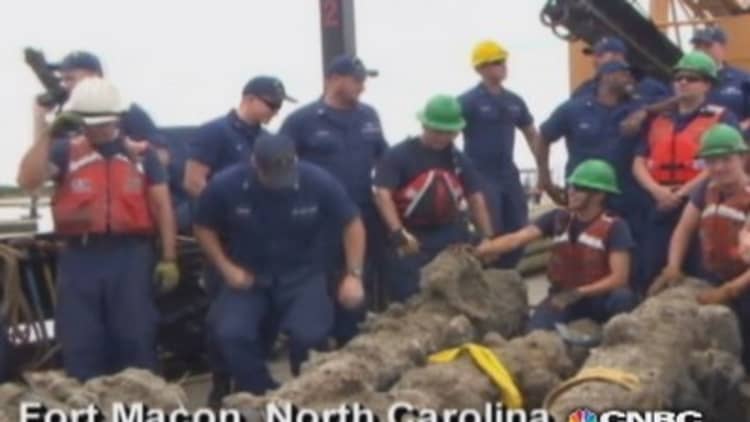Somali pirates have a problem Captain Hook never faced: how to invest millions worth of ransom payments.
Like many a corporate raider, Somalia's pirate financiers often look to create a vertically integrated, diversified business, according to the "Pirate Trails" study by the World Bank, the United Nations Office on Drugs and Crime and Interpol's maritime piracy task force.
"Piracy is a lucrative business," Stuart Yikona, a senior financial sector specialist with the World Bank, said in a blog posting. The World Bank estimates Somali pirates collected between $339 million and $413 million in ransom payments between April 2005 and December 2012. "The exact amount is very hard to pin down, given the reluctance of the shipping companies and pirates to reveal the cost and rewards of piracy."
(Read more: Hollywood-style sting nabs alleged pirate kingpin)
After expenses, including paying low-level foot-soldiers who carry out the attacks as well as other employees, such as cooks and mechanics, pirate financiers collect between 30 and 70 percent of the total ransom, he said.
But where does the money go?
Most often it goes into developing militias or political influence, the study found after conducting a series of interviews which included low- and mid-level pirates as well as law-enforcement and military officials and victims. "Pirate financiers have now evolved to the point where they are not only the most successful criminals at sea, but also some of the most powerful actors on land, thanks to their weaponry and economic influence," the report said.

Why do pirate overlords want to expand on land? In part, so they can branch out their business into dry-land kidnapping for ransom, it said.
Another popular destination for pirate booty: the transport business, primarily boats to be rented for use in pirate attacks, the study said.
"Some pirates choose to invest in truck companies. These investments in transport and logistics can easily be explained by a need to supply logistics for pirate operations." Others invested in the oil business to supply fuel to pirate operations, it said. Another use for the transportation investments: human trafficking and migration smuggling.
Some also invest in agriculture and livestock farming, in part to supply food to pirate operations, the report said.
(Read more: One man's hunt for a pirate booty gold mine)
Among all the investments, "engaging in counterpiracy is probably the boldest," the study found.
"Some pirates have started to offer their services as consultants or experts on piracy, negotiators for victims or shipping companies, and providers of other services, including proof-of-life interviews," the study said. "These 'companies' openly advertise their services, sending invoices, advertising their services or even contacting victims of hijackings directly."
As might be expected, some of the funds end up in the drug business, specifically dealing in khat, a small, leafy plant which induces a mild state of euphoria when chewed; it is legal and often unmonitored in some African countries, where it is part of a more than thousand-year-old social custom. Imports of khat into Somalia run into the hundreds of millions of dollars each year, the study said.
(Read more: Aphrodite girls: Inside an alleged high-end escort service)
The active ingredient in khat breaks down about 48 hours after picking, making the trade dependent on a rapid distribution network, the report said. Pirates' investments in transportation may be paying off.
Of course, pirate financiers need a ready consumer base for their new products and many find it among their own workers.
Typically, lower-level pirate foot-soldiers are provided khat, alcohol, sex workers and trafficked girls on credit, with the consumption recorded and the cost deducted from the eventual ransom payout, the report said.
"This type of spending on leisure and line of credit are some of the main reasons why most foot soldiers eventually go back to sea," the report said, noting the effect can be compounded by fines for bad behavior, such as falling asleep on post, which can run into the thousands of dollars. "This system is one of the reasons why most pirates find it difficult to retire after their first expedition; they often contract so much debt that they are left with almost nothing after they are done reimbursing their expenses."
With the prices of many of the goods both sold to and by the pirate conglomerates at least tripling, what the report calls a "pirate-centric" economy may face an economic bubble.
—By CNBC's Leslie Shaffer; Follow her on twitter @LeslieShaffer1

